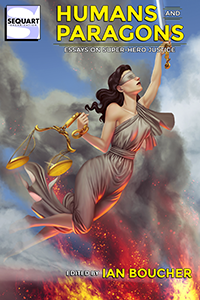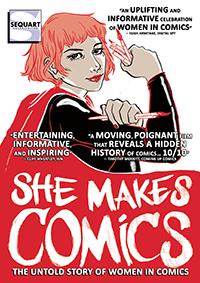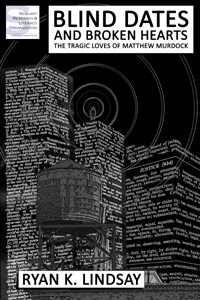Down with eyes romantic and stupid
Down with sighs and down with Cupid
Brother, let’s stuff that dove
Down with love.
–Bobby Darin, “Down With Love”
Whenever someone asks me what’s the best part of being a father, I know what I’m supposed to say. The answer involves peeling some crinkled photos out of a wallet sleeve while recounting some funny anecdote about changing diapers. And it involves beaming. Lots of beaming. But I’ll let you in on a little secret—that’s not the best thing about being a father. Wanna know what it is?
The standards are so pitifully low.
In fact, outside of eating potato chips, it’s hard to think of any activity with lower standards than fatherhood. Pick up a basketball and you realize pretty quickly that you’re no Lebron James. Try to repair something and you’re reminded of one of the TV hosts who, like a weird cross between Bob the Builder and MacGyver, seems capable of fixing anything with Duck tape, a screwdriver, and some old chewing gum. Even doing something routine like driving a car comes with the nagging reminder that Steve McQueen could do it better.
But fatherhood? That’s like having to take a remedial math class in summer school. You don’t have to worry about anyone setting the curve too high when your classmates are Homer Simpson and Peter Griffin. And I don’t think these low standards are anything new. Sure, we have the mythical Father Knows Best image of the ‘50s dad, but for every Robert Young or Hugh Beaumont there were a thousand stoic, stand-offish, “bread winners” who defined themselves by climbing the corporate ladder at work while strapping their children at home with a leather belt.
Our culture just doesn’t seem to expect much of dads. It’s been funny to watch Mad Men over the years because we get to see how the double standard works. For women like Betty, their performance as parents defines them. Betty is a despicable mother, and the audience—self included—gleefully hates her for it. On the other hand, Don is defined by his work, so when, after several months of neglect, he almost reaches out to his kids and almost has a meaningful moment, we find ourselves deeply moved. Granted, he doesn’t actually seem to do anything or really follow through, but c’mon. He’s only a dad, after all.
While these lower standards can work to our advantage as fathers, I sometimes feel guilty. For example, ever since I started writing my book, I’ve found myself opting out of family movie trips, dropping off my wife and kids at the theater before heading over to the coffee shop for two hours of uninterrupted writing. It’s productive, but it doesn’t always feel right. That’s why when the family headed out to see Maleficent last weekend, I decided to go as well. It was a weekend matinee, and since I was the only adult male in the audience, I guess I was the one setting the curve for the week. Told you it was easy.
Maleficent makes for an interesting study, in part because it deals quite dramatically with these issues of fatherhood and gender. Maleficent is a re-working of the Sleeping Beauty myth, using the same character designs as the original Disney animated film. That movie, released in 1959, was one of the studio’s most ambitious and self-conscious efforts, though the results were mixed. Visually, it boasted gorgeous, widescreen compositions, and the soundtrack was even partially adapted from Tchaikovsky.[1]
In other words, it’s exactly what you might expect from the establishment in the late ‘50s. It’s a little pretentious, a little safe, a little “classy,” and … a little dull. Though some of it is striking, particularly the Maleficent scenes, the movie sometimes feels a little like the cinematic equivalent of the Percy Faith Orchestra. It’s your grandmother’s idea of a fine, dignified film.
The new film, Maleficent, is also visually striking, but this time the filmmakers do some interesting things—especially where gender is concerned. (And if that sentence wasn’t a strong enough clue, I’ll go ahead and give you the obligatory spoiler warning now.) As has been well noted, the early Disney films—especially the so-called “Princess” films—have a troubled history when it comes to gender. Snow White, Cinderella, and Sleeping Beauty each feature a beautiful princess who suffers greatly until she is rescued by her gallant and dullish Prince. Disney has tried to alter that formula in more modern films like Beauty and the Beast where Belle actually rescues the Prince and where the villain, Gaston, is a beer-drinking, womanizing, big game-hunting, macho man.
Maleficent, likewise, features a male villain—Aurora’s father, King Stefan. In the original film, the King was presented as a benign figure, loving towards his daughter and heartbroken over the curse placed upon her. He was supposed to be likable, although there were clearly some chinks in his paternal armor. For example, his means of expressing his love for his daughter—setting up an arranged marriage and then outsourcing parental duties to the three fairies—leaves a little something to be desired. Ah, but that’s a 1950’s dad for you. As I said, that curve never has been set very high.
But in the new film, finding the flaws in Stefan no longer requires a crash course in French Deconstructionism. This version of Stefan is a blatantly rotten father. Not only does he outsource his parental duties to the three fairies, but in this version, the fairies are so bumbling and incompetent that it’s as if he handed over his baby to the fairy equivalent of Moe, Larry, and Curly. And when Aurora mistakenly returns home one day before her sixteenth birthday, King Stefan doesn’t even recognize her at first, nor is there any outpouring of emotion. Instead, he appears irritated and orders her to her room so he can get back to his “man’s work.” It seems he has a woman to destroy.
The woman, of course, is Maleficent. As a revisionist take on Sleeping Beauty, this film is similar in many ways to the musical, Wicked, which I wrote about a few weeks ago. Maleficent gets a backstory, motivation, and dramatic sympathy. We see the young Maleficent as the most powerful figure in her kingdom, a flying fairy and Earth Mother of sorts who soars into battle, leading her forces against the invading, all-male army of the humans.
Early in the film, Maleficent falls in love with the young Stefan, but Stefan is too committed to the politics of his world to stay with her. He wants to be King, and he’s willing to do anything necessary—including betraying Maleficent—in order to further his career. In other words, it’s the old 1950’s male ethos—money, position, and power—that stands in direct opposition to a domestic life.
So in order to become king, Stefan tricks Maleficent and cuts off her wings. Much has been made of this scene, including some seeing it as a metaphor for rape, which is true enough, but the significance of Stefan’s crime is broader than that. Maleficent’s wings are her signature trait—the source of her power, beauty, pride, and self-identity. Ultimately, they are the signs of female empowerment in the film.
Which is what makes stealing them particularly criminal. Since the stolen wings become the key to deciding who will become king, the story draws a clear connection between patriarchal rule and the disempowerment of women. It’s a zero sum game. Someone has to lose. A man can only achieve power by demonstrating his dominance over a woman.
This is an important point, because it ties into the history of masculinity over the past 150 years. In his book, Manhood in America, Michael Kimmel looks at the history of male types. The 20th century was largely dominated by the model of the “self-made man.” Now I don’t want to bore you too much, but the short-hand version is that this “self-made” model of masculinity often relied on the subjugation of others in order to maintain and define power. In simpler terms, the self-made man was largely built on sexism, racism, and homophobia. The trick to defining success was keeping others down.
Of course this entrenched form of male supremacy and patriarchy transcends modern American social politics. After all, the cultural history of Europe and of the church is dominated by many of these same practices—white men achieving power by suppressing others.
So for a company like Disney, this is pretty radical stuff, and it even goes beyond just deconstructing bad fathers or critiquing the patriarchy. Maleficent sets about correcting the other key area of the Princess formula that traditionally weakens the women characters. It de-mythologizes the notion of romantic love. In the original film, Aurora can only be resurrected by “true love’s kiss,” so in Maleficent, we see the characters go to great lengths in order to allow the future Prince Phillip to save the day. But apparently reports of Phillip’s smooching skills were exaggerated. It’s only when Maleficent, Aurora’s ironically nicknamed “fairy godmother,” gently kisses the girl’s forehead that we finally see the real power of “true love’s kiss.”
This failure of romantic love should sound familiar to anyone who saw last year’s Frozen, where the young lovers who fall in love at first sight are portrayed as slightly stupid, and where the bond between sisters is far more powerful than whatever mutual attraction might be developing between Anna and Kristoff. This thwarting of the traditional Disney romance plot helps to debunk the necessity of romantic love.
Both Anna in Frozen and Aurora in Maleficent find their strength and identity prior to committing to a romantic relationship, and even though Phillip remains in the picture, “landing her man” is no longer Aurora’s primary pathway to happiness. Assuming they finally do get married and have children, perhaps their equal status might even make Phillip a better father. And perhaps the next time we plan a family movie trip, my wife should go to the coffee shop and work on her novel.
But regardless, both Aurora and Maleficent have found happiness and contentment on their own. And by the end of the film, as Maleficent revels in her newly restored wings, the traditional theme of Disney’s Princess films—“You’re Nobody till Somebody Loves You”—starts to sound a little more like “Free Bird.”
[1] If you look closely, you’ll also see glimpses of what looks like Gamorrean Guards from Return of the Jedi, so there’s that.























































Never have I wanted to see Maleficent more than after reading this.
This article is terrific. What it says is very perceptive and smart–AND amusing. Thanks, Sequart, for publishing it!